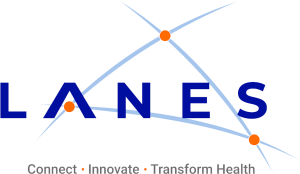The original article can be found it Healthcare Tech Outlook
CIOs from medicine-facing businesses, whether provider organizations, pharmaceutical companies, payers or medical device companies, will all be impacted by the current national shift to “value-based” care from fee-for-service. While we’ve been dealing with changes in healthcare reimbursement for over 30+ years, the momentum for substantive change has never been this great. With the passage of the Patient Protection and Accountable Care Act of 2010 (PPACA), also referred to as “Obamacare”, and the looming crisis of the disproportionally high amount of the GDP we are paying for healthcare compared to other countries, fundamental change in U.S. healthcare reimbursement is inevitable.
“The emerging solution to this crisis of rising costs is the shift to value-based reimbursement”
The emerging solution to this crisis of rising costs is the shift to value-based reimbursement. The best way to describe this is with the “triple aim” as described by the Institute of Healthcare Improvement (IHI). This triple aim is to improve the health of populations, the experience of care for patients, and reduce per capita costs. These three aims are the focus on so-called accountable care organizations (ACOs), currently being promulgated by Medicare and population health technologies. It’s not yet clear whether this new model of care will ultimately reduce costs or fully support the IHI’s triple aim, but what is certain is that CIOs need to take this shift into account when developing strategies and implementing new population-focused technologies.
Managing the health of a population is supported by four essential technologies or what I refer to the four “pillars” of population health. The first pillar is care communications, making sure necessary information is provided to the caregiver when they are making decisions about the care of a patient. This includes secure communications like secure texting and Direct Trust emails, and the exchange of information through Health Information Exchanges (HIEs). If caretakers are aware of what others have already done, they can make better decisions about care and avoid duplication of diagnostics and procedures. The second pillar is patient engagement. Involving the patient (or their parents) into his or her care improves patient satisfaction, gives the patient more control of his or her medical information, improves his or her ability to communicate to their healthcare providers, and makes them more accountable for their own healthcare. A patient portal is an example of this technology, but with the rapid rise of the “Internet of Things” with wearables and sensors, this area is evolving beyond the patient portal quite quickly.
The third and perhaps the most important technology pillar aimed at improving patient outcomes and reducing cost is providing relevant analytics at the point of care. Population health analytic platforms require the ability to ingest data from disparate sources, and integrate that data into a single structured database. On top of this analytic platform run programs such as disease-specific registries that implement care guidelines and reports on the population’s health. More and more, predictive analytics running on this platform can better predict readmission, sepsis, and other patient decompensation. The fourth pillar is care management. Patients and parents often need help managing care outside of the care environment, such as post-discharge from an acute illness, a new diagnosis of a chronic illness or extensive needs for durable medical equipment.
For medical provider organizations, it’s no longer sufficient for CIOs to just provide a basic EMR, systems that run the ancillary services, financial and HR systems, technology infrastructure and the like. Today’s healthcare CIO must be in expert in care communications, patient engagement, analytics and care management. Strategies must now include these technologies to ensure that the organization will be successful in this new value-based care environment. But this doesn’t just stop at healthcare providers. Healthcare payers sit on a treasure trove of patient status and claims data. Leveraging this data to improve the health of the population they serve has been a focus of insurers for some time, but what will change is the need to share this data with providers caring for their patient population. Data must become less proprietary. The medical device industry will need to come forward with new innovations to improve and monitor care, while expecting downward pressure on earnings as provider organization margins decrease. Pharma must move forward to embrace precision and personalized medicine; the ultimate big data challenge utilizing data from the human genome and working closely with providers to leverage this new form of medicine in a cost-effective way.
Many would like to return to the “good old days” of fee-for-service medicine for all, but even if we have a different party in the white house who endeavors to overturn Obamacare, we’ve begun a process to improve the value of the care we deliver, to improve the health of the greater population of patients we serve, and to engage our patients and improve their experience of medical care. All industries which intersect this health care “triple aim” must prepare to do business differently in the future, and IT needs to support this.
